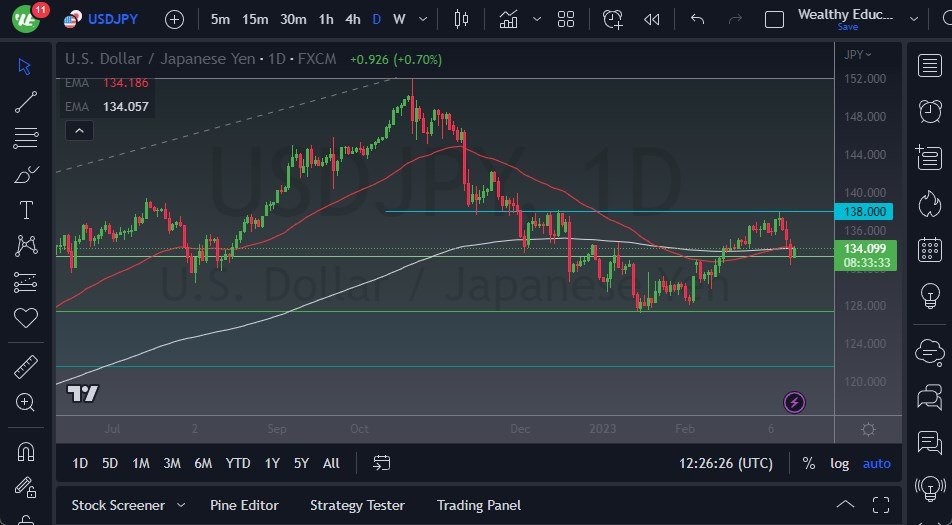The US dollar saw a slight rally during the recent trading session, showing signs of stability against the Japanese yen. After a couple of days' worth of significant selling pressure, this could be the first step in turning things back around. It is worth noting that the 200-Day EMA and the 50-Day EMA are sitting just above, which could offer some resistance. However, if the market can break above those levels, it would be a good sign.
The Bank of Japan will continue to pay close attention to the 10-year yield and has a limit of 50 basis points on that bond. To maintain that limit, they will have to print more yen to buy more bonds every time rates strengthen, which will flood the currency market with yen and disrupt the supply/demand equation. As long as this is a threat, there is a high chance that the market may turn around and go much higher. Therefore, the market will continue to be sensitive to interest rates around the world, as rising rates put downward pressure on the value of the Japanese currency.
Traders Should Watch These Price Levels:
- The ¥132.50 level should provide support, but if the market breaks down below it, it is likely to go down to the ¥130 level.
- The market may have a lot of noisy behavior, but traders should look at it through the prism of interest-rate situational awareness.
- Currently, the ¥137.50 level is likely to offer significant resistance as a ceiling, so anything above that could send this market much higher, potentially opening up the possibility of continuing the overall uptrend that we saw last year.
- At this point, traders should avoid trying to short this market, despite the recent difficulty on the greenback.
Overall, the US dollar has seen some stability against the Japanese yen, but there are resistance levels that could impact its performance. The Bank of Japan's actions and the market's response to them will play a significant role in the US dollar's performance. Traders should stay informed and be prepared for sudden market shifts. The market will continue to be sensitive to interest rates around the world, and it is important for traders to consider all factors before making any decisions. As interest rates continue to rally from time to time, that will continue to put negative pressure on the Japanese yen longer-term.
Ready to trade our daily Forex forecast? Here’s a list of regulated forex brokers to check out.


